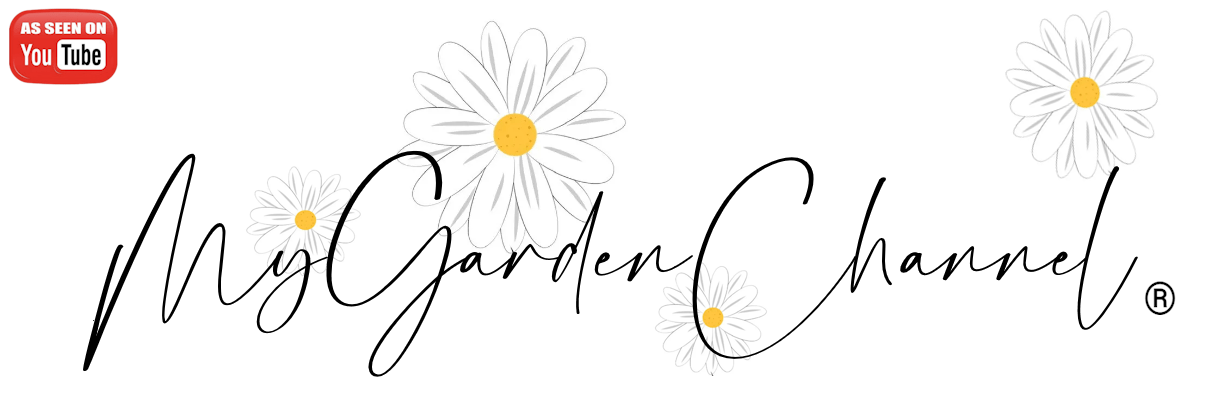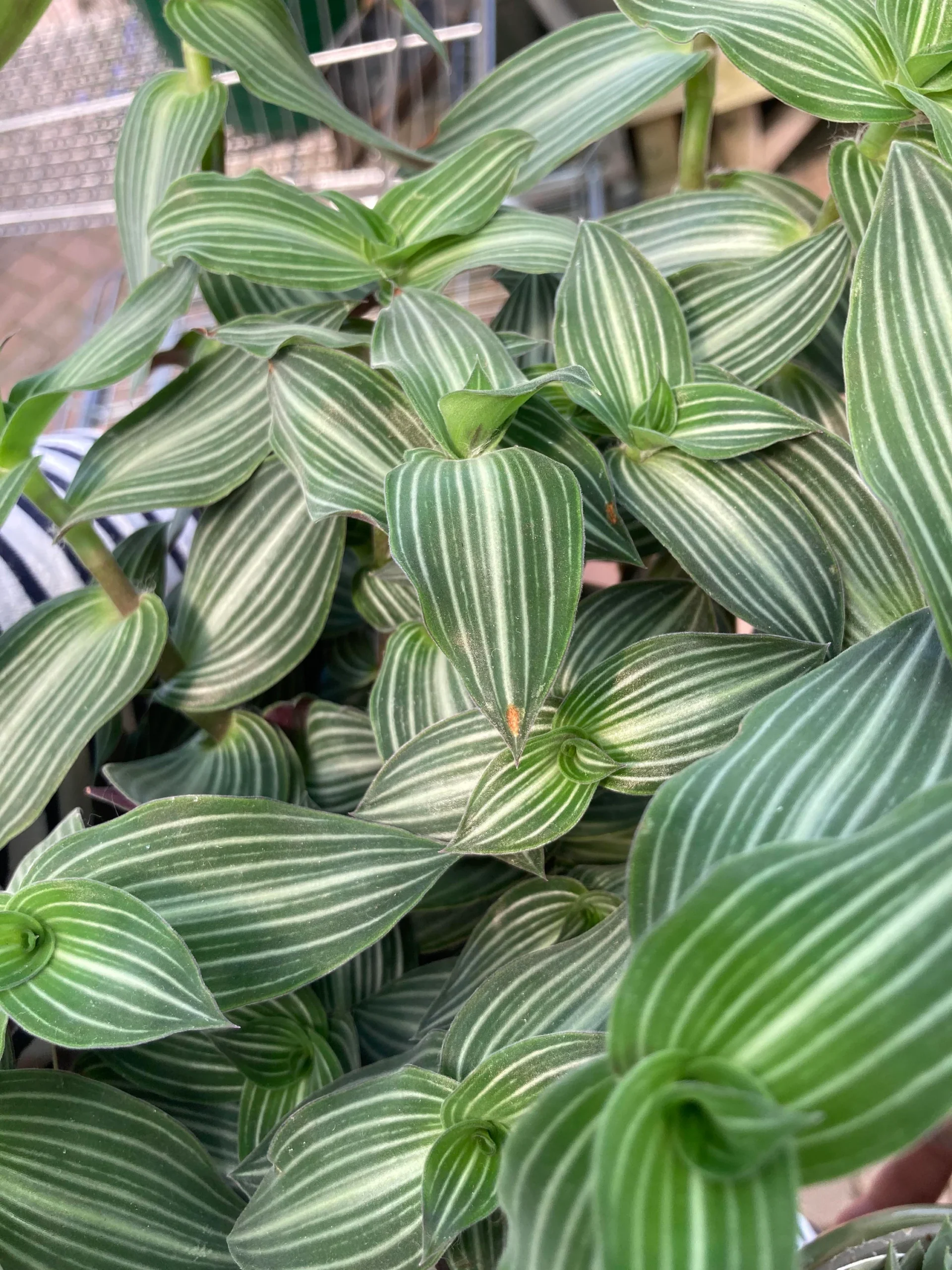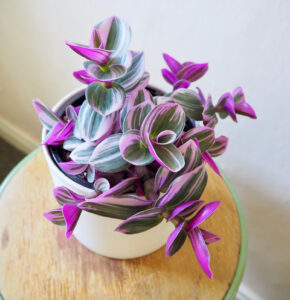Overview
- Common Name: Puppy Ears Tradescantia
- Scientific Name: Tradescantia sp. (often sold under cultivar names, may be a form of Tradescantia sillamontana or hybrid)
- Plant Type: Perennial (often grown as a houseplant or annual in cold climates)
- Growth Habit: Low-growing, spreading or trailing
- Foliage: Velvety, soft, green to gray-green leaves with a distinctive teardrop or ear-like shape
- Mature Size: 6–12 inches tall, spreads 1–2 feet
- Light Requirements: Bright indirect light to filtered sun
- Hardiness Zones: USDA 9–11 (can be overwintered indoors)
- Toxicity: Mildly toxic to pets if ingested (can cause stomach upset or skin irritation)
Description
Tradescantia ‘Puppy Ears’ gets its name from the soft, slightly floppy leaves that resemble the ears of a young dog. The foliage is thick and fuzzy, giving it a tactile, velvety quality. It often grows in a low, trailing habit, making it great for hanging baskets, pots, or as a ground cover in warm climates.
While flowers may appear in pink or purple, they’re usually secondary to the attractive foliage. This plant thrives with minimal care and adapts well to a range of indoor or outdoor conditions as long as it is protected from frost and receives enough light.
Light Requirements
- Ideal: Bright, indirect light
- Tolerates morning sun or filtered sunlight (such as near an east or west-facing window)
- Outdoors, protect from hot afternoon sun which may scorch the leaves
- Too little light will cause leggy growth and dull coloration
If growing indoors, place near a bright window, but avoid direct midday sun. In low light, it will survive but may lose some of its fullness and color.
Watering
- Water when the top 1 inch of soil feels dry
- Like most Tradescantias, ‘Puppy Ears’ prefers to dry slightly between waterings
- Avoid letting the plant sit in soggy soil—it can lead to root rot
- Reduce watering in winter when growth slows
A good rule of thumb: water thoroughly, let the excess drain, and never let the pot sit in water.
Soil
- Use a well-draining potting mix
- Ideal mix: standard houseplant soil blended with a bit of perlite or coarse sand for extra drainage
- A cactus or succulent mix also works well
Avoid heavy or compacted soils that retain too much moisture.
Humidity and Temperature
- Prefers moderate humidity, but generally tolerant of typical household conditions
- If indoor air is very dry, especially in winter, consider grouping with other plants or using a small humidifier
- Thrives in temperatures between 60°F and 80°F (15°C–27°C)
- Not frost-hardy—move indoors when temperatures drop below 50°F (10°C)
Outdoors, treat it as a tender perennial or bring it inside for the winter.
Fertilization
- Feed monthly during the growing season (spring through early fall) with a balanced liquid houseplant fertilizer diluted to half strength
- Stop feeding during the winter rest period
- Too much fertilizer can cause leggy growth and reduce the fuzzy appearance of the leaves
Pruning and Maintenance
- Prune or pinch back stems regularly to encourage bushiness and prevent legginess
- Use clean, sharp scissors to trim long or bare stems back to a node
- You can root trimmed cuttings easily to fill out the pot or start new plants
This plant benefits from routine grooming—remove any yellowing leaves or dried tips.
Repotting
- Repot every 1–2 years, or when the roots begin to outgrow the pot
- Choose a container with good drainage holes
- Slightly larger pots allow for continued spreading and trailing growth
Tradescantia tends to grow quickly in the right conditions and will fill its container fast.
Propagation
Stem Cuttings
- Take 4–6 inch stem cuttings just below a node
- Remove lower leaves and place in water or moist soil
- Roots develop quickly—within 1 to 2 weeks
- Once rooted, transplant into a small pot or back into the parent container for a fuller look
This plant is very easy to propagate, making it great for sharing or expanding your collection.
Common Problems and Pests
Leaf Issues
- Leggy growth: Not enough light
- Leaf yellowing or mushiness: Overwatering or poor drainage
- Dry, crispy leaf tips: Underwatering or very dry air
Pests
- Occasionally affected by:
- Spider mites
- Mealybugs
- Aphids
Use insecticidal soap, neem oil, or rinse off pests with water. Keep plants clean and check under leaves regularly.
Toxicity
- Mildly toxic to cats, dogs, and humans if ingested—may cause nausea or vomiting
- Fuzzy leaves may cause mild skin irritation in sensitive individuals
Keep out of reach of pets or young children, and wear gloves if you have sensitive skin.
Display and Styling Tips
- Use in hanging baskets to show off the trailing stems
- Combine with other fuzzy or low-light tolerant plants for a textural arrangement
- Pair with neutral pots to let the foliage color and texture take center stage
- Outdoors, use in containers, borders, or as a trailing ground cover in mild climates
Summary
| Attribute | Details |
|---|---|
| Light | Bright, indirect light |
| Water | When top 1 inch of soil is dry |
| Soil | Well-draining, light mix |
| Humidity | Moderate; typical indoor is fine |
| Temperature | 60°F to 80°F (15°C to 27°C) |
| Fertilizer | Monthly during active growth |
| Growth Habit | Low-growing, spreading/trailing |
| Pruning | Pinch back to encourage bushiness |
| Propagation | Very easy via stem cuttings |
| Toxicity | Mildly toxic to pets and humans |


